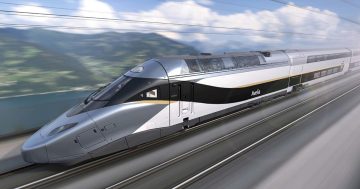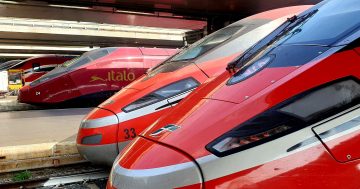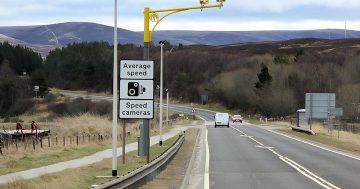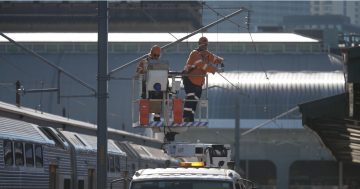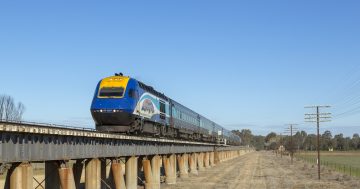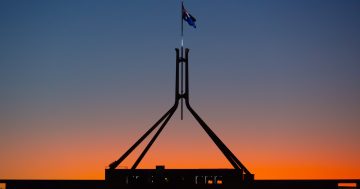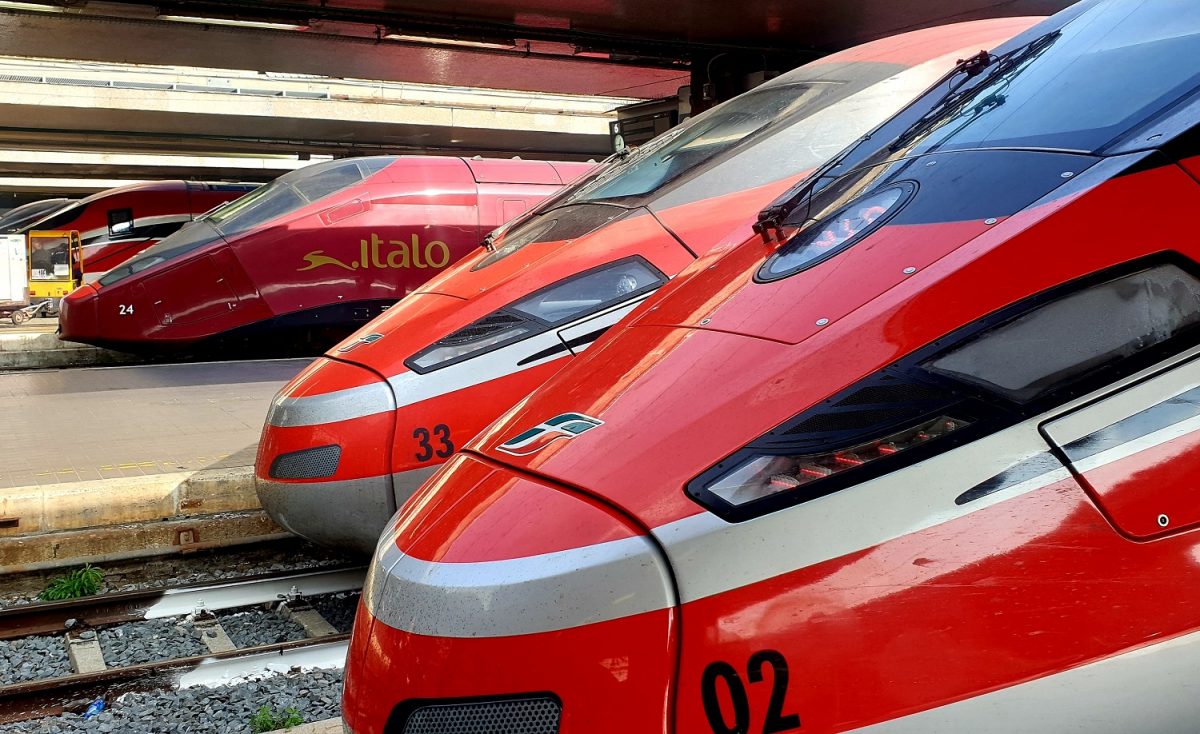
Frecce high-speed trains stand ready at Rome’s Termini Stazione. Photo: Andrew McLaughlin.
Two high-speed rail lobby groups have joined forces to prepare a joint submission on the benefits of a Canberra-Sydney high-speed rail link to ACT Chief Minister Andrew Barr and the ACT Independent Senator David Pocock for consideration.
The submission from the High Speed Rail Association and Fastrack Australia lays out 10 recommendations to get a high-speed rail project started and its benefits for not just the Canberra region but for southeastern Australia.
The submission says both organisations are advocating for faster connectivity between the cities of Australia, whether they be capital or regional cities, and that “high-speed rail is the epitome of faster connectivity”.
They say faster connectivity drives economic growth, and they point to developed and developing countries around the world introducing high-speed rail and extending their existing networks to other regions and countries.
“People living in regional areas intuitively understand the importance of faster connectivity,” the submission reads. “Faster and more frequent trains is their number one request for new infrastructure to improve the economy and liveability of their cities and regions.
“Unfortunately, capital city dwellers do not share this understanding, instead focusing on the increasing unaffordability of housing and greater congestion in their cities.
“Clearly, capital cities will benefit if they have to cater for fewer new residents,” it says.
“And clearly, regional areas will thrive with more people and larger economies.
“What is not often understood is that Australia’s productivity will also increase,as the cost to service new residents in regional areas is so much lower than the cost for capital city residents.”
While the submission focuses on the Canberra-to-Sydney route, both organisations are advocating for a more comprehensive network spanning Brisbane to Melbourne.
It says that the ‘mega-region’ will encompass the Greater Brisbane region with spur lines to regional centres in Queensland, the NSW North Coast economic corridor from the Queensland border, Newcastle, the Greater Sydney region including the Blue Mountains, Southern Highlands and Illawarra, the Capital Region, the Albury-Wodonga region, and the Greater Melbourne region with spur lines to Geelong, Ballarat and Gippsland.
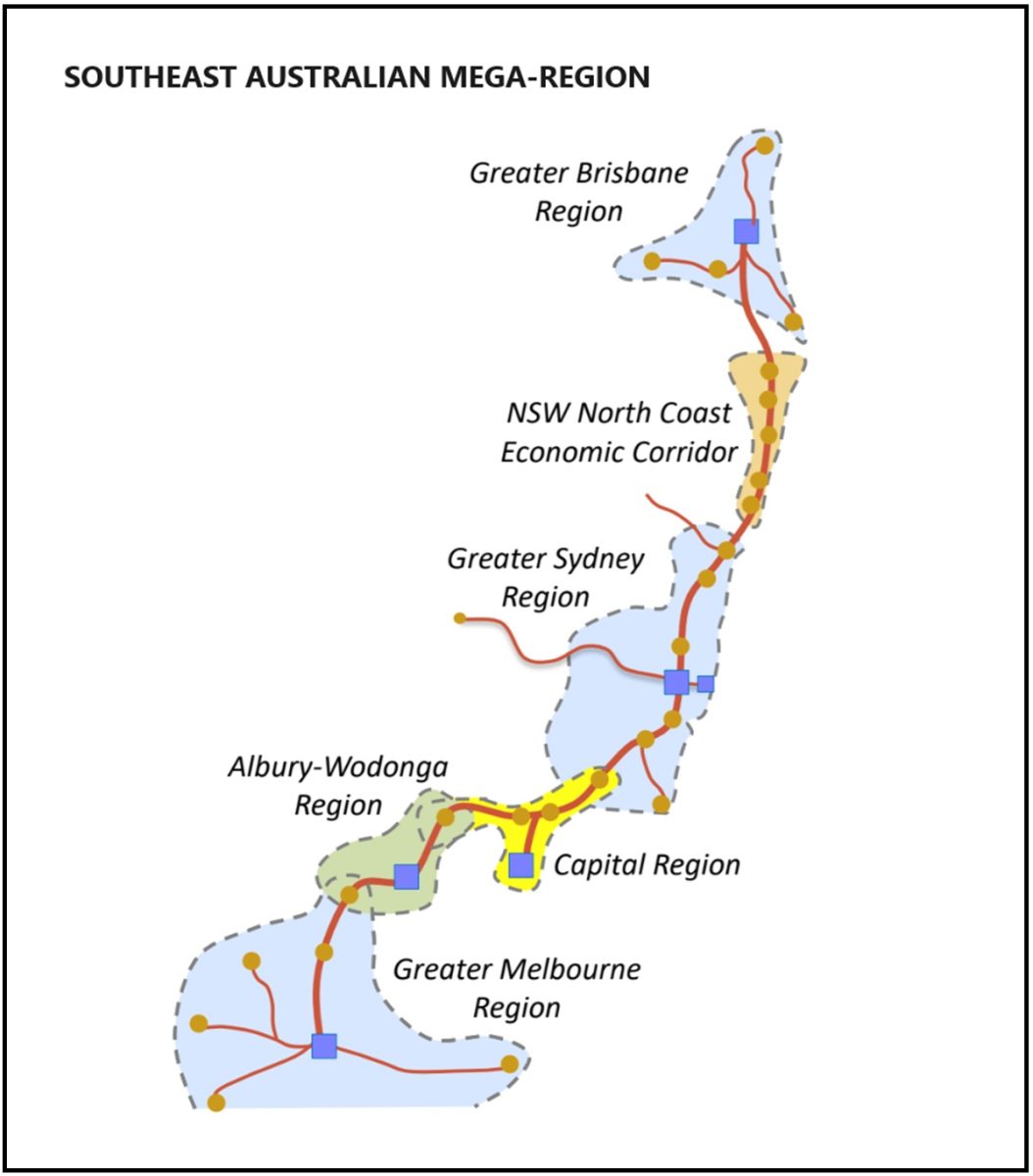
The submission identifies six primary regions within a southeastern Australia mega-region that high-speed rail would serve. Image: High Speed Rail Association and Fastrack Australia.
“Initially, faster-commuting services to capital cities will expand the jobs market for the capital city,” it says.
“This will encourage population shift to surrounding regional centres and allow businesses to open plants and facilities in secondary cities.
“Over time, this will create clusters of economic activity linking businesses across the region into a common economy.”
But they say the primary challenge to achieving their vision is to stop considering high-speed rail as a standalone system and that Australia needs an integrated network of high-speed, faster, improved and standard rail lines that connect all regional and capital cities across Australia.
Some of the groups’ recommendations include a national plan of settlement in the regions, the development of an economic case for a national rail network, the development of a national rail plan, and for the High Speed Rail Authority to commence planning for the next stages of high-speed rail to be implemented beyond the current Sydney-to-Newcastle plan.
Other recommendations include the development of a route through Sydney with a station to be located at Rosehill near Parramatta, the implementation of national rail governance arrangements for both passenger and freight rail, the funding of projects through land-capture and beneficiary pays principles in conjunction with the states, the establishment of a national passenger rail operator to manage interstate services and, as a priority, the building of a Canberra spur line to Goulburn.
“We have identified the key actions the Commonwealth Government should now take to commence the development of a national rail network capable of supporting Australia’s population and economic growth for the rest of the century,” the submission says.
“The list of recommendations is comprehensive. But each one is critical in its own right. We implore the government to provide the resources needed to get the development of this essential infrastructure underway in FY2024-25.”
Original Article published by Andrew McLaughlin on Riotact.


